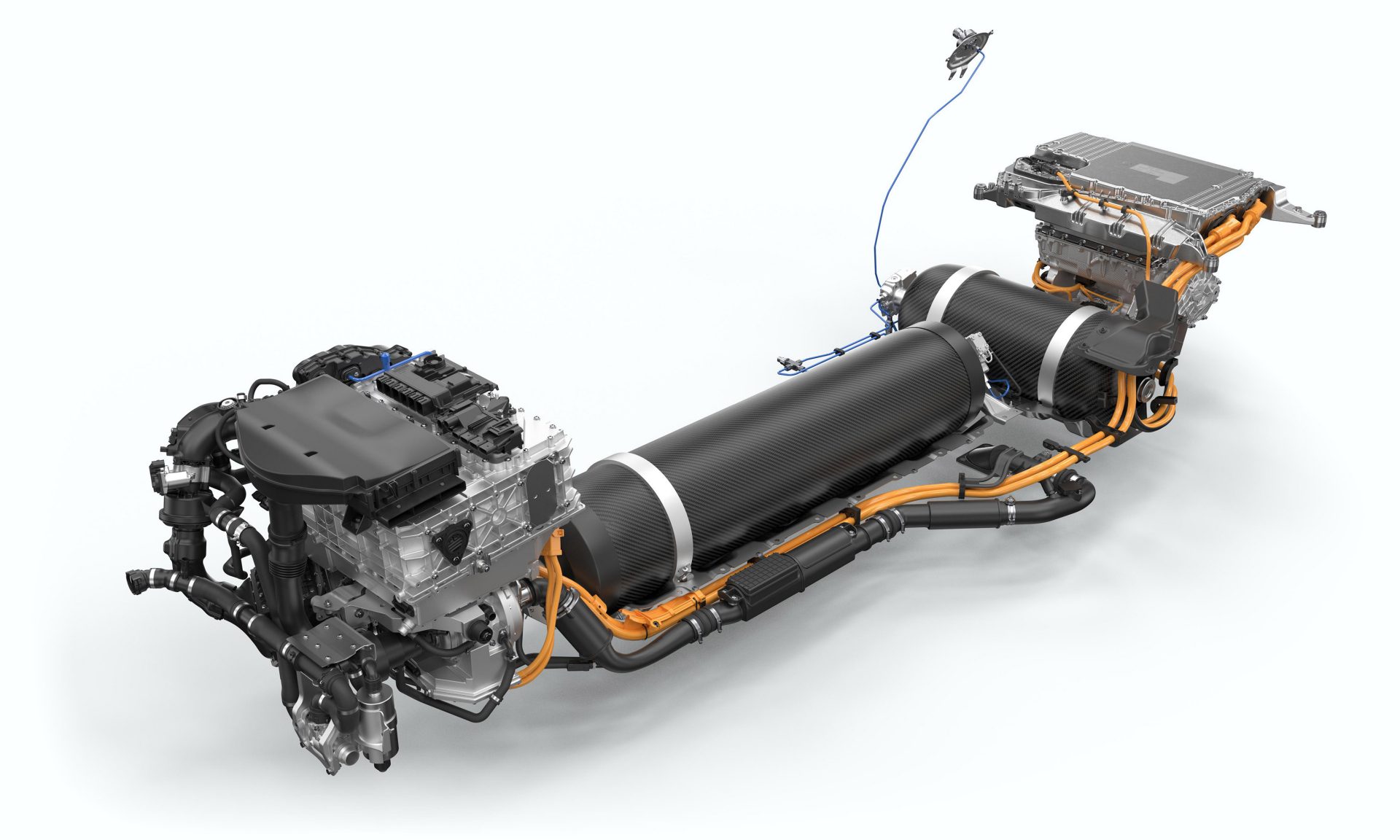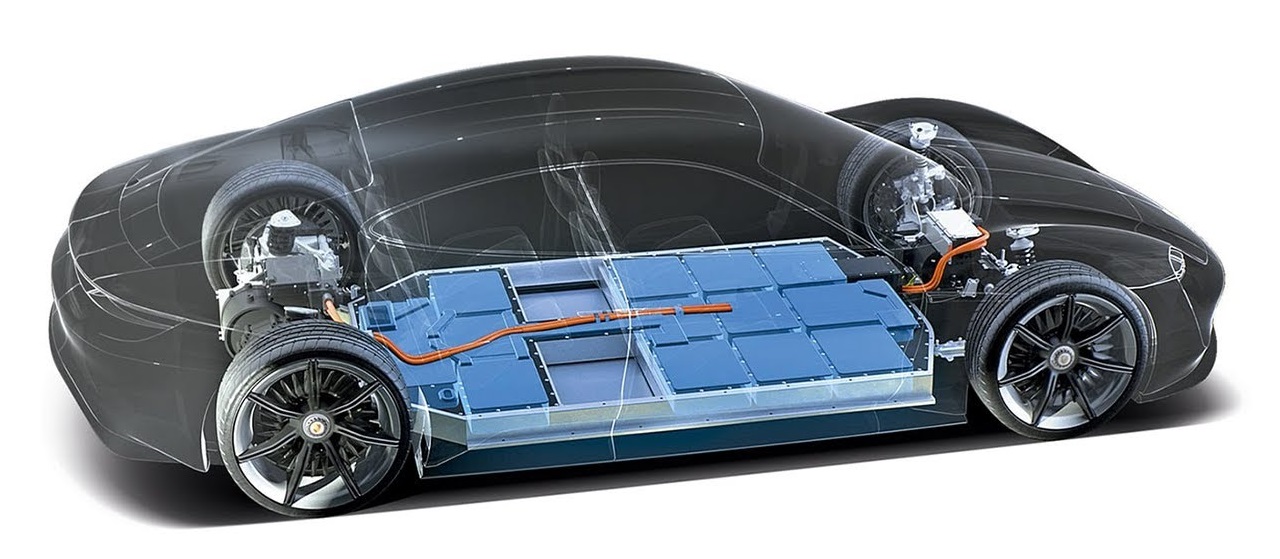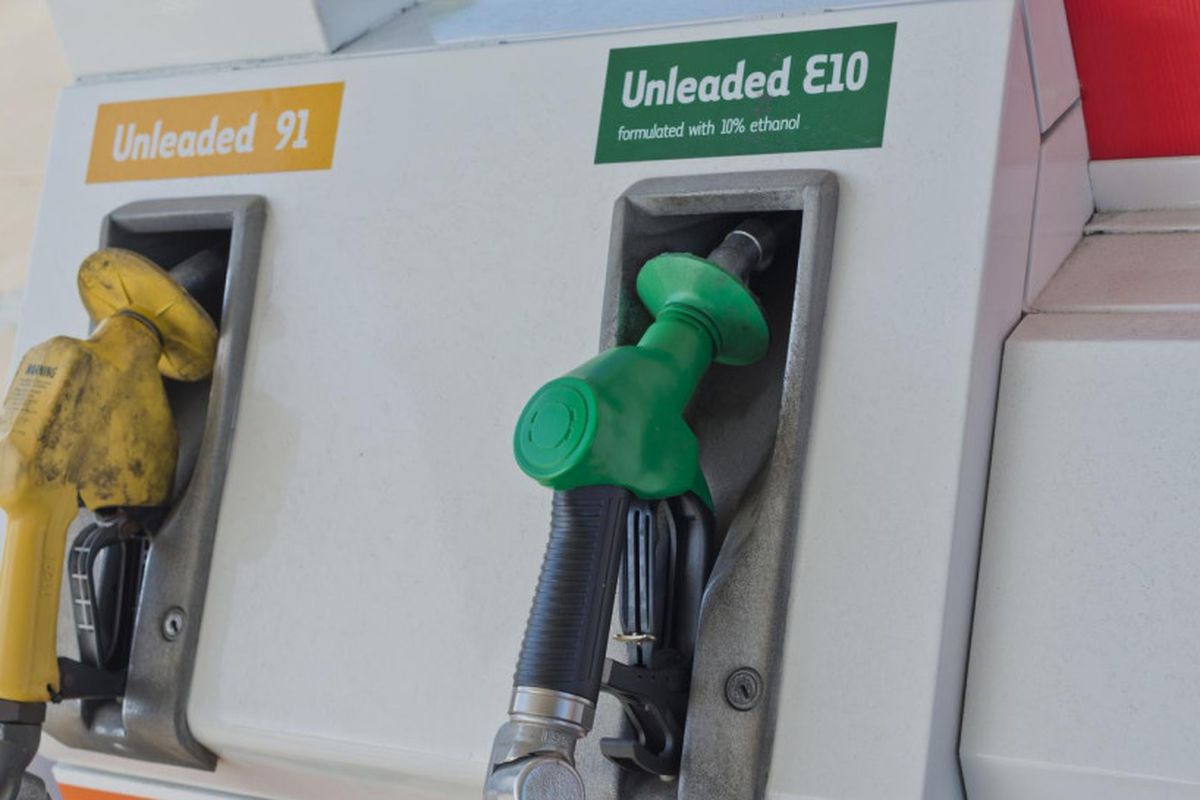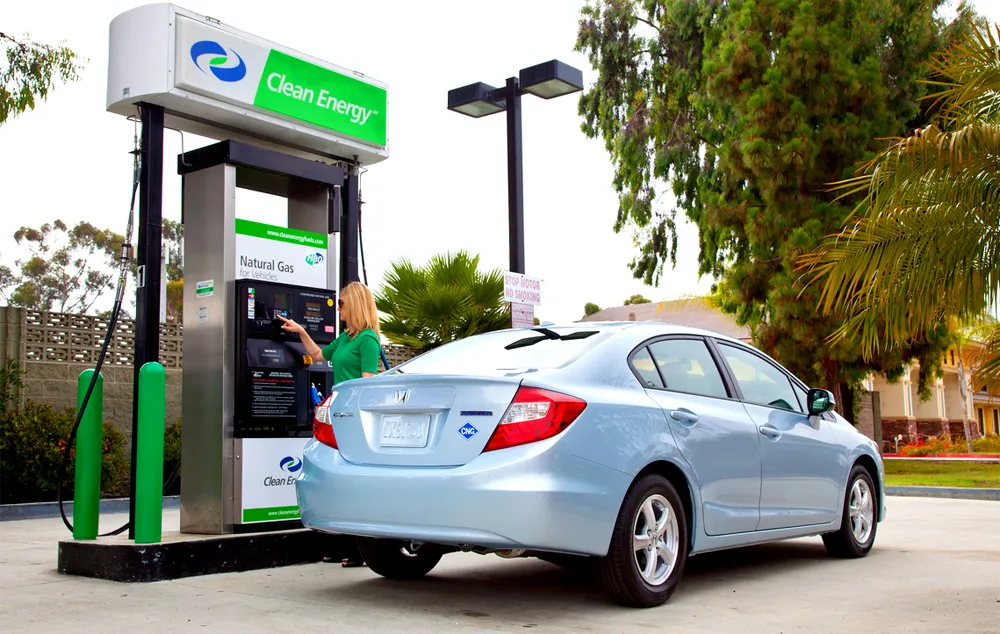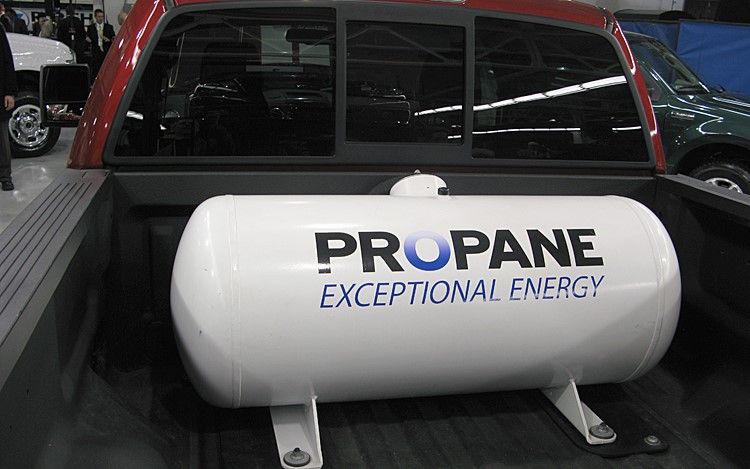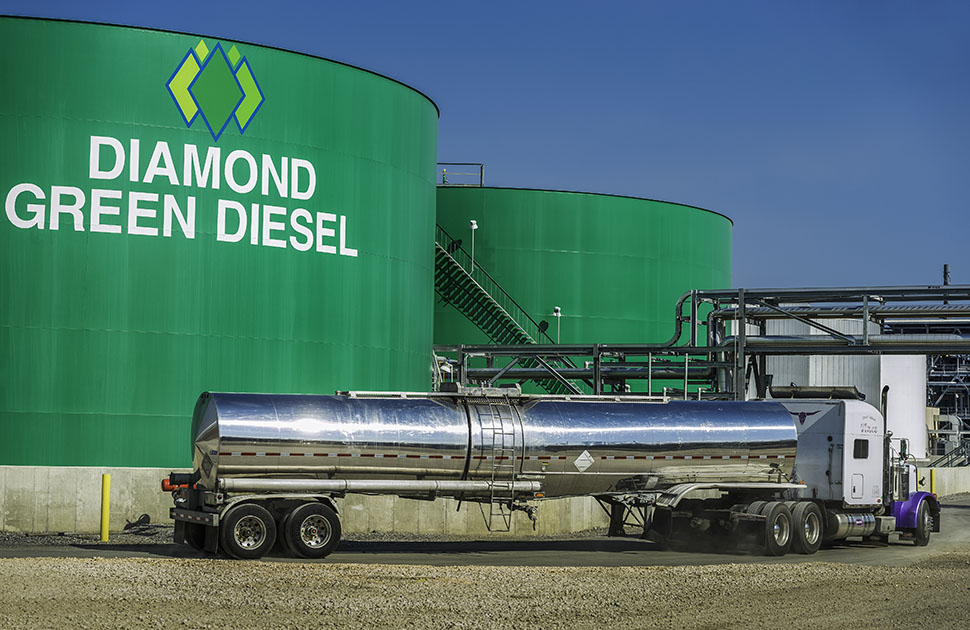The Evolution And Future Of Alternative Fuels
In an era marked by environmental consciousness and the pursuit of sustainable energy solutions, alternative fuels have emerged as a key player in reshaping the landscape of transportation. This article explores the diverse world of alternative fuels, delving into their scientific underpinnings, environmental impacts, and potential to revolutionize the way we power vehicles focused in electricity, hydrogen, ethanol, natural gas and propane and renewable diesel.
Hydrogen
The Science Behind Hydrogen Fuel Cells
Hydrogen fuel cells stand at the forefront of a revolutionary shift towards cleaner energy solutions. At their core, these cells harness the fundamental principles of chemistry to produce electricity in a manner that holds great promise for the automotive industry.
The Electrochemical Dance Of Hydrogen
Hydrogen fuel cells operate on the principle of electrochemical reactions involving hydrogen and oxygen. Within the cell, hydrogen molecules undergo a process known as electrolysis, where they are split into protons and electrons. The protons travel through a proton exchange membrane, while the electrons are channeled through an external circuit, creating an electric current. As these protons and electrons reunite with oxygen on the other side, water and heat are the only byproducts, emphasizing the environmentally friendly nature of this process.
Potential Applications In The Automotive Industry
The automotive industry has increasingly turned its gaze towards hydrogen fuel cells as a transformative power source for vehicles. These cells offer an alternative to traditional internal combustion engines, producing electric power with higher efficiency and lower environmental impact. Hydrogen fuel cell vehicles,often abbreviated as FCVs, hold the potential to revolutionize transportation by providing a clean and sustainable mode of mobility.
Advantages
- Zero Emissions:Hydrogen fuel cells produce electricity with water as the only emission. This zero-emission feature positions them as a key player in mitigating air pollutionand reducing the carbon footprint associated with transportation.
- High Energy Density:Hydrogen has a high energy density, meaning it can store and deliver a significant amount of energy in a compact form. This characteristic makes hydrogen fuel cells efficient in powering vehicles with an extended range.
- Quick Refueling:Unlike battery electric vehicles, hydrogen fuel cell vehicles offer quick refueling times comparable to traditional gasoline-powered vehicles. This addresses one of the common concerns associated with electric vehicles, namely, range anxiety.
Navigating The Challenges
- Infrastructure Hurdles:Establishing a widespread infrastructure for hydrogen production, distribution, and refueling stations remains a significant challenge. The limited availability of such infrastructure currently hinders the widespread adoption of hydrogen fuel cell vehicles.
- Cost Considerations:The production and storage of hydrogen can be expensive. As technology advances and economies of scale come into play, the cost of hydrogen fuel cells is expected to decrease, but overcoming the initial cost barriers remains a challenge.
- Energy Intensive Production:The primary method of hydrogen production involves reforming natural gas, which is energy-intensive and not aligned with the goal of achieving a completely renewable and sustainable hydrogen economy. Exploring alternative methods of hydrogen production is crucial for addressing this challenge.
Electricity
Electricity has emerged as a pivotal force in propelling the paradigm shift towards sustainable transportation. With an increasing array of electric vehicles (EVs) entering the market, the role of electricity in powering our mobility is more pronounced than ever.
The Core Of Electric Vehicles
Electric vehicles function based on a straightforward yet revolutionary principle: the conversion of electrical energy into mechanical energy to propel the vehicle. At the core of an electric vehicle is its electric motor, powered not by conventional combustible engines but by the energy stored in an onboard battery. If you're interested in the future of electric cars and when they might take over, check out this articlefor more insights.
Charging Into The Future
- Battery Technology Advances:The progress in battery technology has been a game-changer for electric vehicles. Lithium-ion batteries, in particular, have become the standard, offering high energy density and prolonged lifespan. Ongoing research into new battery materials and technologies promises even more efficient and sustainable energy storage solutions.
- Charging Infrastructure Expansion:The rise of electric vehicles is intrinsically linked to the development of charging infrastructure. Governments, businesses, and individuals are investing in expanding the network of charging stations, making it increasingly convenient for electric vehicle owners to recharge their cars.
Zero Emissions Revolution
- Environmental Impact:Electric vehicles contribute significantly to reducing greenhouse gas emissions and air pollution. As the electricity grid transitions to cleaner and renewable sources, the environmental benefits of electric vehicles become even more pronounced.
- Energy Efficiency:Electric motors are inherently more efficient than internal combustion engines, leading to higher energy efficiency. This means that a larger proportion of the energy from the power source is converted into useful work, reducing energy waste.
The Growing Availability Of Electric Vehicles
- Diverse Vehicle Options:The electric vehicle market has witnessed a surge in diverse options, ranging from compact city cars to SUVs and even electric trucks. This variety allows consumers to choose electric vehicles that suit their preferences and needs.
- Advancements in Performance:Electric vehicles are breaking traditional stereotypes by offering impressive acceleration, high torque, and a smooth, silent driving experience. The integration of cutting-edge technology enhances the overall performance and appeal of electric vehicles.
Infrastructure Challenges
- Charging Station Accessibility:While the charging infrastructure is expanding, challenges still exist in terms of uniform accessibility. Rural areas and certain regions may have limited charging stations, posing challenges for long-distance travel.
- Charging Time Concerns:Despite improvements, charging times for electric vehicles are still longer than refueling times for traditional vehicles. Addressing this concern involves developing faster-charging technologies and innovative solutions.
Energy Source Sustainability
- Grid Decarbonization:The environmental benefits of electric vehicles are contingent on the decarbonization of the electricity grid. Efforts to transition to renewable energy sources are crucial to ensuring that electric vehicles truly contribute to a sustainable future.
- Battery Recycling and Disposal:Managing the lifecycle of electric vehicle batteries is a concern. Developing effective recycling processesand addressing disposal challenges are essential to minimize the environmental impact of battery production and disposal.
Ethanol
Unveiling The Power Of Ethanol
Ethanol, a versatile and widely embraced renewable fuel, is transforming the landscape of transportation. Derived from corn and various plant materials, this biofuel is seamlessly blended with gasoline, offering a cleaner and more sustainable alternative to traditional fossil fuels.
The Essence Of Ethanol Production
- Biofuel Synthesis:Ethanol is primarily produced through the fermentation of sugars found in plants. Corn, a common feedstock, serves as a primary source, but advancements in technology have expanded the repertoire to include various plant materials such as sugarcane, switchgrass, and even agricultural residues.
- Fermentation Process:The fermentation process involves converting plant sugars into ethanol with the help of yeast or other microorganisms. This natural and biological transformation distinguishes ethanol as a renewable and environmentally friendly fuel.
Fueling Vehicles Sustainably
- E10 and Beyond:Ethanol is commonly blended with gasoline, forming blends such as E10 (10% ethanol, 90% gasoline) and beyond. These blends can be used in conventional gasoline engines without any modifications, making the transition to ethanol-infused fuels seamless.
- Flex-Fuel Vehicles:Some vehicles are designed to run on higher ethanol blends, such as E85 (85% ethanol, 15% gasoline). Flex-fuel vehicles provide consumers with the flexibility to choose between various ethanol-gasoline blends, promoting fuel diversity and reducing reliance on fossil fuels.
Advantages Of Ethanol Blends
- Reduced Greenhouse Gas Emissions:Ethanol has a lower carbon footprint compared to traditional gasoline, contributing to reduced greenhouse gas emissions. The cultivation and processing of crops for ethanol production act as a carbon sink, further enhancing its environmental credentials.
- Improved Octane Ratings:Ethanol has a higher octane rating than gasoline, which improves engine performance and efficiency. Higher octane ratings also allow for the design of more efficient and powerful engines.
Navigating The Path To Sustainability
- Land Use Concerns:The debate over land use for ethanol production raises questions about food crops being used for fuel. Striking a balance between food production and biofuel cultivation is crucial for sustainable and responsible ethanol production.
- Energy Intensity of Production:While ethanol is a renewable fuel, the energy-intensive processes involved in its production, such as planting, harvesting, and fermentation, need to be addressed. Enhancing the energy efficiency of ethanol production is an ongoing area of research.
- Compatibility with Existing Infrastructure:Adapting existing infrastructure, such as pipelines and storage facilities, to accommodate ethanol blends poses logistical challenges. Integrating ethanol seamlessly into the fuel supply chain requires investments in infrastructure upgrades.
Natural Gas
Natural gas, an abundant and cleaner-burning energy source, is stepping into the limelight as a promising alternative for fueling vehicles. In particular, Compressed Natural Gas (CNG) and Liquefied Natural Gas (LNG) are gaining traction, offering distinct applications and advantages in the realm of sustainable transportation.
Compressed Natural Gas (CNG) And Liquefied Natural Gas (LNG)
- Compressed Natural Gas (CNG):CNG is a form of natural gas that is compressed to reduce its volume for storage and transportation. It is stored at high pressure, typically in cylindrical containers. CNG is widely used as a vehicle fuel, particularly in buses, trucks, and some passenger vehicles.
- Liquefied Natural Gas (LNG):LNG takes natural gas a step further by liquefying it at extremely low temperatures. This process reduces the volume of the gas even more, making it feasible for long-distance transportation and storage. LNG is often used in heavy-duty trucks, ships, and trains.
Comparative Analysis - Efficiency And Emissions Reduction
- Efficiency Gains:Natural gas, when used as a vehicle fuel, offers notable efficiency gains compared to traditional options. The combustion of natural gas produces fewer byproducts, leading to improved fuel efficiency. Vehicles powered by natural gas engines can achieve similar or even superior mileage compared to conventional gasoline or diesel engines.
- Emissions Reduction:One of the standout features of natural gas as a fuel is its ability to contribute to emissions reduction. When combusted, natural gas releases lower levels of carbon dioxide (CO2) and pollutants like nitrogen oxides (NOx) and particulate matter compared to conventional fuels. This aspect aligns with global efforts to curb air pollution and combat climate change.
Balancing The Scale - Natural Gas Vs. Traditional Fuels
- Environmental Impact:The environmental impact of natural gas is a pivotal consideration. While it produces fewer greenhouse gas emissions during combustion, the extraction and production processes must be scrutinized. Efforts to minimize methane leaksduring extraction are crucial for ensuring a net environmental benefit.
- Infrastructure Development:Integrating natural gas into the existing fuel infrastructure requires investments in specialized refueling stations and distribution networks. Evaluating the scalability and cost-effectiveness of such infrastructure development is vital for widespread adoption.
- Cost Considerations:Assessing the overall cost-effectiveness of natural gas as a fuel involves not only the price per unit but also factors like vehicle conversion costs, infrastructure investments, and potential economic incentives. A comprehensive analysis is necessary to understand the economic viability of natural gas as a mainstream fuel.
Propane
Propane, also known as liquefied petroleum gas (LPG), stands as a domestically abundant fossil fuel, presenting a promising alternative in the pursuit of cleaner and more sustainable energy sources. This section explores the unique characteristics of propane, emphasizing its lower environmental impact when compared to traditional gasoline.
Propane - A Domestically Abundant Fossil Fuel
- Abundance and Accessibility:Propane is sourced domestically, contributing to energy independence and reducing reliance on international fuel markets. Its abundance ensures a stable and readily available energy source for various applications.
- Versatility of Use:Propane is a versatile energy carrier utilized in diverse sectors, including residential heating, industrial processes, and transportation. Its adaptability makes it a valuable player in the transition towards cleaner energy solutions.
Cleaner-Burning Characteristics
- Reduced Harmful Air Pollutants:When burned, propane produces fewer harmful air pollutants compared to traditional gasoline. This includes lower emissions of nitrogen oxides (NOx) and particulate matter, contributing to improved air quality and reduced respiratory impacts.
- Greenhouse Gas Reduction:Propane's combustion results in lower greenhouse gas (GHG) emissions, particularly carbon dioxide (CO2). The reduced carbon footprint positions propane as an environmentally conscious choice in the effort to mitigate climate change.
Environmental Benefits In Focus
- Air Quality Improvement:The use of propane as a vehicle fuel contributes to enhanced air quality. The reduction in harmful pollutants promotes healthier urban environments and addresses concerns related to smog and respiratory health.
- GHG Emission Reduction:Propane's lower GHG emissions compared to gasoline align with global efforts to minimize the impact of transportation on climate change. The transition to cleaner-burning fuels, such as propane, plays a pivotal role in achieving sustainability goals.
Economic And Practical Considerations
- Cost-Effectiveness:Evaluating the overall cost-effectiveness of propane involves not only the price per unit but also factors like vehicle conversion costs and infrastructure investments. Assessing the economic viability of propane as a fuel choice is essential for widespread adoption.
- Infrastructure Development:Integrating propane into the existing fuel infrastructure requires strategic investments in refueling stations and distribution networks. Examining the scalability and feasibility of such infrastructure development is crucial for the seamless integration of propane into the transportation sector.
Renewable Diesel
Renewable diesel, a fuel derived from biomass, is making waves in the realm of sustainable transportation. Tailored for use in diesel engines, this alternative fuel offers a cleaner and more eco-friendly option for powering vehicles.
Biomass-Derived Transportation Fuel
- Renewable Origins:Renewable diesel stands apart from conventional diesel as it is derived from renewable biomass sources. These sources can include vegetable oils, animal fats, used cooking oil, and other organic materials, marking a shift towards sustainable feedstocks.
- Production Process:The production of renewable diesel involves hydrotreating or hydrogenation of triglycerides present in biomass feedstocks. This process transforms these materials into a high-quality, environmentally friendly diesel fuel.
Seamless Integration Into Diesel Technology
- Compatibility:One of the key advantages of renewable diesel is its compatibility with existing diesel engines and infrastructure. This makes it a drop-in replacement for traditional diesel, requiring no engine modifications or specialized equipment.
- Performance Characteristics:Renewable diesel exhibits similar combustion characteristics to conventional diesel, ensuring comparable engine performance. This seamless integration into diesel technology simplifies the transition to renewable fuels for both manufacturers and consumers.
Environmental Benefits
- Reduced Emissions:One of the standout features of renewable diesel is its potential for significantly lower greenhouse gas emissions. The production process, coupled with the use of renewable feedstocks, results in a fuel that emits fewer carbon dioxide (CO2) and other pollutants during combustion.
- Improved Air Quality:The reduced emissions associated with renewable diesel contribute to improved air quality. The lower levels of particulate matter and nitrogen oxides(NOx) align with environmental goals aimed at mitigating the impacts of transportation on human health and the environment.
Navigating The Road Ahead
- Feedstock Availability:The availability of sustainable biomass feedstocks is a critical factor in the widespread adoption of renewable diesel. Efforts to ensure a consistent and diverse supply of feedstocks are vital for the long-term sustainability of this fuel.
- Economic Viability:Assessing the economic viability of renewable diesel involves considerations such as production costs, market competitiveness, and potential government incentives. A comprehensive analysis is essential to understand the long-term economic benefits of this renewable fuel.
Alternative Fuels - FAQs
What Are Substitute Fuels?
Substitute fuels refer to alternative sources of energy that can be used as replacements for traditional fossil fuels such as gasoline and diesel. These substitutes often come from renewable or unconventional sources and aim to provide a cleaner and more sustainable option for powering vehicles and other energy-consuming systems.
What Do You Mean By Alternative Fuels?
Alternative fuels are energy sources that serve as alternatives to conventional fossil fuels. These fuels are typically derived from renewable or non-traditional sources and are considered more environmentally friendly. Examples of alternative fuels include electricity, hydrogen, natural gas, biofuels (such as ethanol and biodiesel), and synthetic fuels. They offer diverse options for reducing greenhouse gas emissions and dependency on finite fossil fuel resources.
Are Alternative Fuels Better For The Environment?
In general, alternative fuels are considered better for the environment compared to traditional fossil fuels. The environmental benefits vary depending on the specific alternative fuel and its production and consumption processes. However, common advantages include reduced greenhouse gas emissions, lower levels of harmful air pollutants, and decreased reliance on finite and environmentally detrimental resources.
Conclusion
The realm of alternative fuels is vast and dynamic, encompassing a spectrum of options with unique advantages and challenges. As we navigate towards a more sustainable future, it is the synergy of these alternative fuels that holds the key to revolutionizing the way we power our vehicles. Whether through hydrogen fuel cells, biofuels, natural gas, electric vehicles, or synthetic fuels, the journey towards sustainable transportation is a collaborative effort that intertwines science, innovation, and a commitment to a greener tomorrow.
